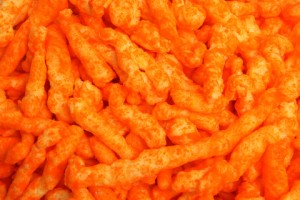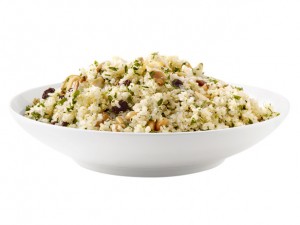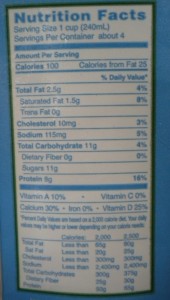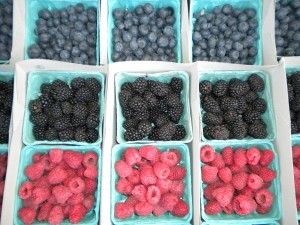Change Is Good – Until It Gives You a Blister
I belong to a gym that offers several different types of group exercise classes. While many of these classes are of interest to me, the schedule never seems to work in my favor so I haven’t had a chance to give any a try. But due to a one-time hiccup in my usual schedule, I was able to attend a turbo kick boxing class this week. I was very excited to try something different from my usual gym workout.
While the class was more of a hyper-speed aerobic workout (with a few punches thrown in for good measure) than a traditional kick boxing workout – it was an effective cardio workout nonetheless. Just when I started getting the hang of when to cross and when to jab, I realized the ball of my right foot was starting to get sore. A few minutes later, I knew I was starting to form a blister. Apparently, all of the bouncing and pivoting on the balls of my feet, which I am not used to, combined with my thicker workout socks, was my body’s way of saying thank you for changing up my workout routine.
While the blister isn’t too bad, nothing like the cringe-inducing, fluid-filled behemoth in the film Run, Fat Boy Run (excellent movie, by the way), it still needs to be dealt with so I did some research on blister prevention and treatment. The Mayo Clinic suggests the following treatment:
Don’t puncture a blister unless it’s painful or prevents you from walking or using one of your hands. If you have diabetes or poor circulation, call your doctor before considering the self-care measures below.
To relieve blister-related pain, drain the fluid while leaving the overlying skin intact. Here’s how:
- Wash your hands and the blister with soap and warm water.
- Swab the blister with iodine or rubbing alcohol.
- Sterilize a clean, sharp needle by wiping it with rubbing alcohol.
- Use the needle to puncture the blister. Aim for several spots near the blister’s edge. Let the fluid drain, but leave the overlying skin in place.
- Apply an antibiotic ointment to the blister and cover with a bandage or gauze pad.
- Cut away all the dead skin after several days, using tweezers and scissors sterilized with rubbing alcohol. Apply more ointment and a bandage.
Call your doctor if you see signs of infection around a blister — pus, redness, increasing pain or warm skin.
Active.com suggests the following preventative measures:
-
Spread petroleum jelly or talcum powder over areas which develop blisters frequently. This will cut the friction.
-
Change socks, shoes or road surfaces that cause the problem.
-
Pad areas of your foot which protrude with foam padding, moleskin, or other products made for this purpose.
-
For chronic problems, you can relieve pressure points with shoe modifications or orthotics.
The gift of hind sight is 20/20. The next time, if there is a next time, I will try a little petroleum jelly and wear my running socks which are thinner and form fitting . I’m off to sterilize my needle now. Wish me luck!
You Can’t Judge a Food by Its Color – or Can You?
I remember the first time I heard about artificial food coloring. I was about 8 years old, and my friends and I had been told that Bubble Yum bubble gum (only THE best bubble gum on the planet) was going to be pulled from the shelves because it contained Red Dye No. 2, a suspected carcinogen. It was a chance we were willing to take, especially since we really didn’t understand the chance we were taking. We just wanted to blow bubbles the size of our heads. The FDA banned Red Dye No 2. in 1976 but, thankfully, Bubble Yum lived on.
So what is artificial color? According to the FDA, artificial colors, or color additives, are synthetically produced (or human made) and used widely because they impart an intense, uniform color, are less expensive, and blend more easily to create a variety of hues. Well, if you put it that way, I’m just fine with food manufacturers using artificial, petroleum-based (yum) colors instead of natural colors like paprika, beets, carmel or blueberries <insert sarcasm here>.
There are currently 9 synthetic dyes that the FDA has approved for use in food. The list includes: Blue 1, Blue 2, Citrus Red 2, Green 3, Orange B, Red 3, Red 40, Yellow 5 and Yellow 6. There have been several other dyes that were once on the approved list, but with additional testing, they were delisted as they were found to be hazardous in some way. For example, at one time specific red and orange dyes were used to make oranges more orange. But these specific artificial colors were taken off the market.
So why would someone want to color and orange more orange? Well, to sell more oranges, of course. Would you rather buy a perfectly orange orange, or one that was slightly yellow? The more appealing and attention getting, the more likely you are to purchase. This is often why you see so many brightly colored candies and drinks in products targeted at children. But ask yourself, when is the last time blue raspberry was a color found in nature? And if you’ve ever made macaroni and cheese from scratch and compared it to the bright orange powder that comes out of the box, I think you get my point.
It’s important to remember that just because a label says “natural” doesn’t mean ALL natural. There may be only one natural ingredient in the product. Several of the ingredient flavors and colors may, in fact, be artificial. Artificial colors are prevalent in so many foods, even foods you might associate with being healthy. I was shocked to find artificial colors used in my super model-endorsed yogurt. I’ve decided to look for another brand. All you have to do to check for artificial food colors is read the label.
There has been a lot of discussion regarding the possible ties between ADHD (attention deficit hyperactivity disorder) in children and artificial colors. There have been two large scale studies conducted in Britain to study the effects of artificial colors on children. While there is not conclusive evidence to prove a connection, there was enough concern that a European Union regulation was passed requiring a warning statement (“may have an adverse effect on activity and attention in children“) on foods that contain at least one of six dyes. According to John E. Huxsahl, M.D. with the Mayo Clinic, “There’s no evidence that food additives cause attention-deficit/hyperactivity disorder (ADHD), but an increasing number of studies show that certain food colorings and preservatives may cause or worsen hyperactive behavior in some children.”
With regard to the current 9 artificial colors that are allowed by the FDA, the Center for Science in the Public Interest (CSPI) believes there could be serious flaws with some of the testing. While all food colors (natural and artificial) must be approved by the FDA, artificial colors must pass tests to show that they are safe and don’t contain cancer-causing substances. But the FDA tests don’t always work as intended. According to CSPI, “Fifteen years ago, FDA and Canadian government scientists discovered that most of the carcinogen benzidine that can contaminate Yellow 5 and Yellow 6 is bound to molecules in the dyes. So routine FDA tests, which look only for “free” benzidine, fail to detect it. And the dyes are sometimes contaminated with 100 to 1,000 times more bound than free benzidine.” Yikes!
Fortunately, the world of natural colors is starting to grow. As more consumers raise their voices and demand healthier products, manufacturers are starting to utilize new, natural flavor sources like purple sweet potatoes, cochineal insects (yep, ground up bugs), and blue gardenias (which are not yet approved for use in foods in the U.S.).
Like you’ve read so many times before on this blog – it is VERY important to read labels. While you’re reading the label for nutritional information, be sure to read the list of ingredients and look for artificial flavors and colors. If you can’t pronounce it, you probably don’t want to eat it. Remember, the natural color of mint ice cream is not kermit-the-frog green and there is nothing natural about neon orange cheese puffs.
The Whole Grain with the Funny Name
Consumers are starting to understand the benefits of whole grains and are moving away from products containing refined/processed grains.
What makes whole grain better? Whole grains haven’t had their bran and germ removed, which makes them an excellent source of fiber. Refined grains, such as white flour and white rice, have the brand and germ removed. While vitamins and minerals are often added back in (this is usually where you see the word “enriched” or “fortified” on an ingredient label), they still don’t have as many nutrients or as much naturally occurring fiber as whole grains.
It’s important to remember that whole wheat ≠ whole grain. Look for the words whole grain and stay away from enriched on ingredient labels. And, to be sure you are getting the maximum benefit, whole grain should appear at or near the top of the ingredient list.
According to the American Heart Association, there are numerous health and nutritional benefits associated with eating whole grains, including:
- Whole grains are generally good sources of dietary fiber; most refined (processed) grains contain little fiber.
- Dietary fiber from whole grains, as part of an overall healthy diet, helps reduce blood cholesterol levels and may lower risk of heart disease.
- Fiber-containing foods such as whole grains help provide a feeling of fullness with fewer calories and so may help with weight management.
For more information on whole grains, you can visit the American Heart Association’s web site at: http://www.americanheart.org/presenter.jhtml?identifier=4574
For some people there is the need or desire to stay away from gluten – which is found in wheat, barley and rye. But eliminating gluten should not keep you from enjoying the benefits of other whole grains as there are many to choose from that provide an excellent source of fiber, minerals and protein.
One of these options is quinoa (pronounced keen-wa). Quinoa originates from the Andean region of South American and has been around for 6,000 years. Quinoa, while technically not a grain (it’s a seed from a dark green leafy plant and is related to beets and spinach), is called a grain because of its texture. Because quinoa contains all of the essential amino acids it is considered a complete protein. Quinoa is very versatile and is prepared the same way as rice but cooks faster. Nutritionally, it is an excellent source of magnesium and fiber and a good source of iron and several B vitamins. You can see a complete nutritional profile by checking out the Nutrition Data web site.
Quinoa can be used in many dishes from salads to side dishes to stuffing. For quinoa recipes, check out these web sites:
In addition to quinoa, there are several other nutritious whole grains you might want to try. For instance:
- Barley
- Brown Rice
- Buckwheat
- Bulgar
- Kamut
- Millet
- Oatmeal
- Popcorn
- Spelt
- Wild Rice
As each whole grain has a different nutritional profile it’s a good idea to vary the types of grains you eat. And remember, when reading ingredient labels, be sure to look for these whole grains at the top of the ingredient list so you can get the most benefit from this essential part of a healthy diet.
Hey, Ice Cream Man!
While much of the country has been toiling under extreme heat this summer, Southern California has been experiencing one of the mildest summers on record. But this week, summer finally made an appearance. And with the hot weather comes the yearning for frozen confections. Fortunately, there are now plenty of low calorie/low fat ice cream treats and frozen yogurts that can satisfy your sweet tooth without packing on the pounds. WebMD has created a list of the best light ice creams/yogurts, bars and sandwiches. Here are the recommendations:
Best Ice Creams/Frozen Yogurts
- Dreyer’s/Edy’s Slow Churned Yogurt Blends with Live and Active Cultures
Vanilla
Cappuccino Chip - Dreyer’s/Edy’s Slow Churned
Raspberry Chip Royale
Cookie Dough - Breyers Light
Vanilla, Chocolate, Strawberry
Vanilla Bean
Rocky Road - Ben & Jerry’s Lowfat Frozen Yogurt
Strawberries & Cream
Half Baked - Haagen-Dazs Lowfat Frozen Yogurt
Vanilla
Vanilla Raspberry Swirl - Starbucks Lowfat Ice Cream
Latte
Best Bars/Sandwiches
- Breyers 100 Calorie Cups
Vanilla Fudge Swirl - Starbucks Bars
Frappuccino Mocha - Skinny Cow
Lowfat Fudge bar
Ice Cream Sandwiches (Assorted Flavors)
Cone: Vanilla with Carmel
Cone: Mint with Fudge - Weight Watchers
Giant Cookies & Cream Bar
You can find complete nutritional information for the treats listed, above, as well as honorable mentions and low sugar options by visiting the Health & Cooking section at WebMD.
Believe it or not, Men’s Health Magazine has created an “Eat This, Not That” guide for making healthier choices at the ice cream truck. Check out this video from The Early Show with Matt Bean, brand editor at Men’s Health, discussing healthier frozen treat options: Ice Cream Truck: Eat This, Not That.
So raise a cone to summer and enjoy.
What is Delayed Onset Muscle Soreness?
Delayed Onset Muscle Soreness (DOMS) is that achy feeling you get in your muscles, usually accompanied by grunting and groaning, when you try to get out of your chair the day after a strenuous workout, or working in the yard all day, or helping a friend move.
According to David O. Draper, professor and director of the graduate program in sports medicine/athletic training at Brigham Young University in Provo, Utah, “DOMS is a common result of physical activity that stresses the muscle tissue beyond what it is accustomed to.”
While many of us were taught that muscle soreness that appeared 24-48 hours after a workout was caused by lactic acid (which is now known to dissipate within 30 to 60 minutes of ending exercise), the real culprit is microscopic tears in muscle fibers. No wonder it hurts.
Scientists believe that the damage, along with the resulting inflammation, causes the pain. According to Carol Torgan, an exercise physiologist and fellow of the American College of Sports Medicine, “The muscle discomfort is simply a symptom of using your muscles and placing stresses on them that are leading to adaptations to make them stronger and better able to perform the task the next time.”
Any movement you aren’t used to can results in DOMS. The pain is usually greater with increased duration or intensity of exercise. Eccentric muscle contractions seem to cause the most damage. In this case, eccentric refers to a lengthening muscle contraction, not your uncle who collects velvet Elvis paintings. Examples of eccentric muscle contractions include running downhill, lowering weights and the downward motion of squats or push ups.
While muscle soreness is actually a sign that you are using your muscles in a way that will make them stronger (assuming the soreness is minor and not the result of an injury or overuse), people new to working out may think that something is wrong. Rest assured, it’s perfectly normal and happens to everyone, from exercise newbies to elite athletes. It’s the body’s way of letting you know that your workout is working.
It’s important to note that minor muscle pain is not a requirement for a good workout. Working out without experiencing DOMS can be just as effective. The old adage “no pain, no gain” doesn’t always apply.
What you do after a workout can help minimize DOMS and speed recovery. Here are a few post-workout suggestions from about.com’s sports medicine section:
- Rest
- Gentle stretching
- Cool down: slow down but don’t stop completely
- Eat properly
- Replace fluids
- Try Active Recovery: perform low intensity exercises after workouts
- Get a massage: you might want to try a foam roller or my personal favorite, The Stick, to avoid the price tag of a sports massage
- Take an ice bath or try contrast water therapy (alternating between hot and cold water)
- Get lots of sleep
- Avoid overtraining
And remember to listen to your body. There will be days when you simply may be too tired and/or too sore to workout. Give yourself a well-deserved break but don’t give yourself excuses. You might want to try cross-training and alternating upper body and lower body workouts so you don’t have to worry about overworking the same muscle groups day after day.
I leave you with a quote from Plato “Lack of activity destroys the good condition of every human being, while movement and methodical physical exercise save it and preserve it.”
Goat Milk? Are You “Kidding” Me?
Get it? Goat milk – kid-ding? Sorry, I couldn’t resist the pun. Anyway, the subject of goat’s milk as a substitute for cow’s milk has been getting some press lately in both consumer and trade publications so I thought I would do some investigation and see what all the hype was about.
As it’s important to compare nutritional information, I went to our local Whole Foods and bought a quart of Meyenberg low-fat goat’s milk and a half-gallon of Whole Foods’ 365 brand low-fat cow’s milk. Both are free from antibiotics and recombinant bovine growth hormone (rBGH), a synthetic (man-made) hormone that is marketed to dairy farmers to increase milk production in cows. According to the Meyenberg web site, their low-fat goat’s milk is higher in calcium, Vitamins A and B, and potassium than cow’s milk. However, if you review their nutritional label and compare it to the 365 cow’s milk, those claims do not stand up.
Here is a nutritional comparison of the two products:
-
Goat’s milk has fewer Calories but more Calories from Fat
-
They are equal in Total Fat and Saturated Fat and contain no Trans Fat
-
Goat’s milk has less Cholesterol and Sodium
-
Goat’s milk contains no Potassium while cow’s milk has 13% of the Daily Value
-
Goat’s milk has less Total Carbohydrates and Sugar
-
Cow’s milk has 27% more Protein (11g v. 8g)
With regard to Vitamins and Minerals:
-
They have identical amounts of Vitamins A and D
-
Cow’s milk has 2% Vitamin C and goat’s milk has 0%
-
Cow’s milk has 25% more Calcium than goat’s milk (40% vs. 30%)
According to supergoat.org, a consumer web site created by goat milk producers, goat’s milk has 15% more calcium and more Vitamin A and D, potassium, copper and manganese than cow’s milk. Perhaps this is true with other brands of goat’s milk, but this one has no copper or manganese and has less calcium than cow’s milk. I checked the goat’s milk against another brand (AltaDena) of low-fat cow’s milk and found similar results. The nutritional claims just don’t add up.
Please know that I am not trying to bash the goat milk industry. Goat’s milk may have some benefits over cow’s milk, especially for some people who are lactose intolerant as goat’s milk has been found to be easier to digest.
From an environmental perspective goats have a much smaller carbon “hoof” print as they don’t require as much energy, food or land as cows and produce far fewer greenhouse gases. Goats are also humanely treated as they are raised on family farms instead of factory farms. Plus, goats provide a valuable service—brush control. Here in Laguna Beach, as well as other parts of Southern California that are prone to brush fires, goats are used to eradicate brush from hillsides. In Laguna they are a sort of mini tourist attraction when they are feeding on the hills closest to town. It is fun to look up on the hill and see a herd of goats doing their “job”.
So what does goat milk taste like? Well, it tastes a lot like cow’s milk. A little different, but not bad. On cereal I could hardly taste the difference. Some of the KeepWell team said it tasted a bit like goat cheese, which makes sense. I also tried Redwood Hill Farm’s goat milk yogurt. The consistency was a little thinner than I was used to, but it was still tasty.
While I am disappointed with some of the results of my “investigation”, I’m happy to have tried, and learned, something new.
To Sleep, Perchance to Avoid Extra Pounds
We often talk about the importance of proper nutrition and fitness as part of a healthy lifestyle. But there is another, equally important element—sleep. Getting enough quality sleep is vital to staying healthy. Most adults need an average of 7.5 hours per night. Getting too little and/or poor quality sleep can lead to weight gain because a lack of sleep can cause your metabolism to work against you.
According to Michael Breus, PhD, author of Beauty Sleep and the clinical director of the sleep division for Arrowhead Health in Glendale, Ariz., it has to do with two nighttime hormones: gherlin and leptin. Gherlin is the hormone that tells you when to eat, and if you are sleep deprived you have more gherlin in your system. Leptin is the hormone that tells you when to stop eating, and you have less leptin when you are sleep deprived. So, you end up eating more and slowing down your metabolism. That’ a recipe for weight gain.
The news may be worse for middle age women. In a recently published study in the International Journal of Obesity, Finnish researchers followed 7,300 40-60 year old adults for 7 years. They found that women who reported significant sleep problems put on more weight than the women who slept well. One third of the women with sleep problems gained an average of 11 pounds.
Interestingly, men did not have the same results. This may be due to the study methodology which involved studying only 1,300 men versus 5,700 women. However, there was another large-scale (35,000+ participants of which 31,000 were men) study conducted in Japan which concluded that short sleep duration was associated with weight gain and the development of obesity over 1 year in men, but not in women. It appears this is an equal-opportunity problem.
Jennifer LaRue Huget, columnist for the Washington Post, recently wrote an article on avoiding foods that hinder sleep. Jennifer interviewed Michael Grandner, a sleep researcher at the University of Pennsylvania’s Center for Sleep and Respiratory Neurobiology, and asked what should be avoided. Here are his responses:
1. Fat
Surprise – the number one culprit is not caffeine. Grandner’s most recent research, published in February’s Sleep Medicine, tracked the diets and sleep habits of 459 women enrolled in the federal government’s Women’s Health Initiative. He tracked several nutrients and found, in summary, “The more fat you ate, the less you slept”.
2. Caffeine
This one is probably obvious. Switch to decaf in the afternoon.
3. Alcohol
While alcohol may help you fall asleep, it disrupts REM sleep, which is an essential component of quality sleep.
And as for the old stand-bys of milk, tea and turkey, these seem to work due to the placebo effect. There isn’t enough credible scientific evidence to prove any of these are truly effective at helping people fall or stay asleep.
Lesson learned – don’t overlook the importance of getting a good night’s rest. It is vital to your overall health. I leave you with this quote from English playwright, Thomas Dekker, Sleep is the golden chain that ties health and our bodies together. Well said.
Salutation Nation with lululemon
Please join KeepWell at the lululemon athletica store in Newport Beach, Calif. (Fashion Island) this Saturday, August 7 at 9:00 a.m. for Salutation Nation – a free one-hour, outdoor vinyasa yoga class.
KeepWell will be handing out samples in the store and we would love to meet you. (If I happen to disappear for a few minutes its because I’m in the dressing room trying on a new pair of running shorts I’ve had my eye on.)
People with all levels of yoga experience are welcome to attend. Even if you don’t know your child pose from your cobra pose, you are sure to enjoy this outdoor event set in a beautiful courtyard. Don’t forget to stop by the store afterward to check out lululemon’s clothes and accessories (for men and women), and grab a KeepWell.
If you’re not able to make it to Newport Beach, no worries as this is a nationwide event. Visit lululemon’s Facebook page for the Salutation Nation location in your area.
So grab your mat, take a deep breath and start your weekend on a positive note.
Short List of Ingredients at the Farmers Market
Yesterday I was able to visit a second farmers market in the Orange County area, and this time I came back with several “prepared” foods as well as fresh-baked whole grain bread and a bouquet of fresh flowers.
One company that had some really delicious offerings was Baba Foods (headquartered in San Diego, Calif.). Baba Foods sells a large variety of hummus, tapenade, assorted “dips” and fresh pita bread. You can sample everything. Everyone in the KeepWell office recommends the Triple Layer Appetizer which consists of feta cheese, sun dried tomatoes, pesto, parsley, basil, oregano and extra virgin olive oil (EVOO). The roasted garlic and artichoke hummus is also a hit. Besides the great taste, I appreciate the short, all natural list of ingredients.
Another product with a very short, easy-to-understand list of ingredients is tamales from Gourmet Tamales, located in Oceanside, Calif. Gourmet Tamales offers more than 20 different types of fillings, from chicken and pork to vegetarian and even dessert tamales (how did I not know about these?). The chicken with red mole sauce is excellent as is the spinach, feta and tomatillo vegetarian tamale. My husband, who leans toward being a meatatarian, even enjoyed the veggie version. I think because it wasn’t soy trying to taste like chicken. They are a little heavy on the masa, but the filling is delicious. I have yet to try the orange mango dessert tamale, but I’m looking forward to it.
I enjoyed my conversation with the proprietor of the fresh-baked bread stand. She educated me about spelt, an ancient grain that is a sort of predecessor to our modern day wheat. But I preferred the whole grain wheat so I took home a fresh-baked loaf. The only downside is that the bread is unsliced (she told me the key is to cut the bread on its side, not the top). I am concerned that my kids will end up slicing off 2-inch thick pieces of bread and we’ll only get 3 sandwiches out of the loaf. She also told me how to store it so it will stay fresh as long as possible.
I encourage you to visit a farmers market in your area. Just make sure you allow yourself plenty of time to check out all the vendors, sample products and talk to the sellers to find out how foods are grown and/or prepared. As one mother explained to her two young children while they sampled a piece of fruit, “You know how we buy fruit at the grocery store? Well, this is where the grocery store gets their fruit.” Yes, and it’s fresh and delicious.
National Farmers Market Week
The United States Department of Agriculture (USDA) has declared August 1-7, 2010 National Farmers Market Week. If you haven’t been to a farmers market, or, like me, its been a while since you’ve been, it’s a great time to check one out.
You can find farmers markets in your area by visiting the USDA’s Farmers Market Search site at: http://apps.ams.usda.gov/FarmersMarkets/. Unfortunately, this site does not work for me. It yields no results in an area with plenty of well established farmers markets. Maybe it works better in other areas of the country. However, a national site that does work is Local Harvest at http://www.localharvest.org/farmers-markets/which lists many, but not all, of the markets in my area. I did a Google search and came across a local resource in the Orange County Farm Bureau (OCFB). They provide a list of certified markets along with facts about products and recipes.
What does it mean to be a certified market? According to the OCFB “every farmer who sells at a certified market is inspected by the county agricultural commissioner to make sure he/she actually grows the commodity being sold.”
There is a farmers market in our area, but until yesterday, I had not visited for more than 5 years. What a fool I’ve been! Especially since I routinely complain about the quality of berries at our local grocery store (I think the produce buyer needs to have his/her taste buds examined). I was so pleased to see over 30 tents with everything from fresh, ripe fruits and vegetables to fresh seafood, nuts and even tamales (more on that later in this post). Many vendors are certified organic. Others are pesticide and fungicide free, but not certified organic.
There are so many benefits to buying produce at a farmers market. Besides the fact that you are supporting local farmers, you get to sample just about everything to ensure you are getting the most flavorful items. You also get expert advice on how to pick the best fruits and veggies: some by color, others by touch, smell our sound (melons).
I’ve been wanting to try pluots (a plum/apricot hybrid) and there were many varieties to choose from. I asked one of the vendors which one he recommended and he suggested the Flavor Queen. I was not disappointed. They are delicious – more plum-like than apricot, but still a wonderful piece of fruit. I also purchased softball-sized yellow peaches, a variety of berries, and pistachio nuts.
There is another farmers market a little bit further away that is open on Tuesdays and is supposed to be the best market in the area. When I visit tomorrow I plan to purchase tamales from a couple of vendors and have a little taste test. As many of you who live in Southern California know, homemade tamales are the best.
Some vendors accept credit cards, but many only accept cash. And sometimes you can haggle to get a better deal, especially if you buy in larger quantities.
So if you get the chance, stop by your local farmers market. You won’t be disappointed.
Stay tuned for the tamale update later in the week.











![DSCN0213[1] whole wheat bread loaf](http://keepwellfoods.com/blog/wp-content/uploads/2010/08/DSCN02131-300x225.jpg)



Recent Comments